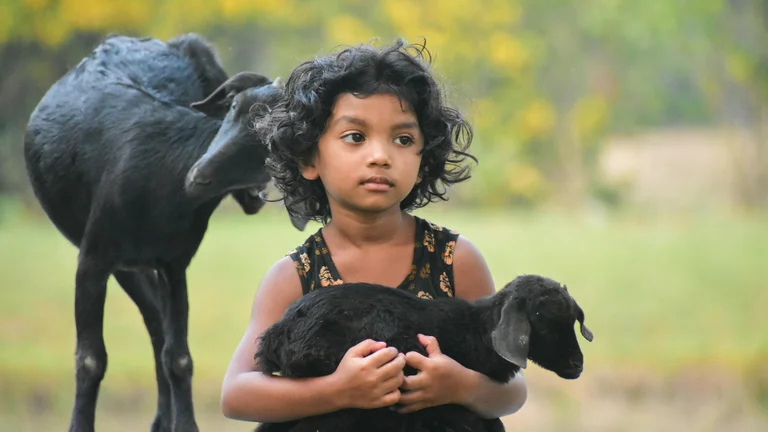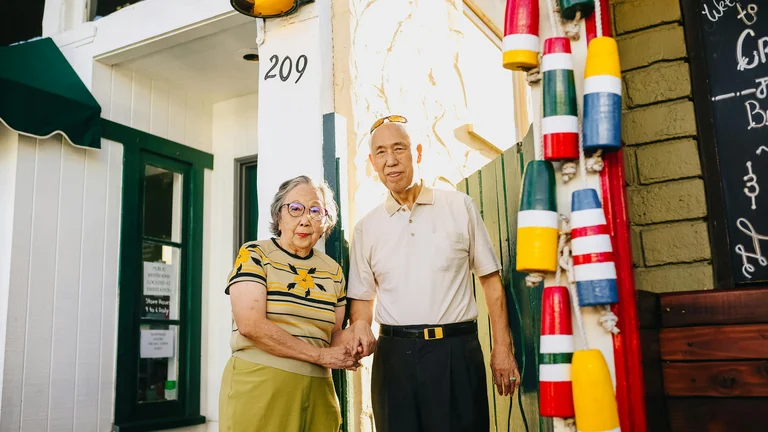Understanding the Concept of 'Love Rival' in K-Dramas

In Korean dramas, the trope of love rivals is a quintessential ingredient that spices up storylines with tension, drama, and sometimes, humor. A 'love rival' is typically a character who competes with the protagonist for the affection of the same romantic interest, creating conflict and emotional drama. Although this dynamic often unfolds with an intense undertone, many K-Dramas introduce awkward and hilarious moments during encounters between love rivals that stand out for their comedic timing, situational irony, and clever dialogue. The awkwardness usually stems from the characters’ mutual discomfort, unspoken tensions, or unfortunate coincidences that place them in embarrassing situations.
This trope is deeply rooted in the storytelling tradition of K-Dramas, not only because it adds layered complexity to romantic plots but because it resonates with viewers who appreciate the blend of romance and humor. These awkward encounters between love rivals serve as a relief from the heavier emotional weight of the drama, humanizing characters by exposing their vulnerabilities or unexpectedly silly behavior. The fascinating aspect lies in how these awkward moments are meticulously crafted through script, acting, and directorial choices, generating a unique space where comedy and romance collide.
Exploring the funniest love rival awkward encounters allows fans and critics alike to appreciate the nuanced approach of K-Dramas to romance and humor. This topic will thoroughly analyze and dissect examples from popular dramas, explaining why certain scenes succeed in making audiences laugh while deepening the characters’ interpersonal complexities. By examining such encounters across varied series, we gain insights into cultural humor styles, production techniques, and audience expectations within the Korean entertainment context.
Typical Scenarios Leading to Hilarious Love Rival Awkwardness
Love rival encounters can appear in many forms. A few recurring situational patterns frequently produce comedic awkwardness that K-Drama fans have come to expect and love. These patterns, carefully repeated but varied by creativity and context, include mistaken identity, unintentional eavesdropping, public confrontations with escalating embarrassment, and involuntary proximity resulting in misunderstandings.
For instance, mistaken identity scenes often involve characters confusing one another in highly charged emotional environments, such as parties or classes, leading to mistakenly directed accusations or awkward flirtations. Unintentional eavesdropping takes advantage of the dramatic irony where one rival overhears a private conversation meant to be confidential, causing them to react in utterly offbeat ways once discovered.
Public confrontations are among the most popular sources of comedic awkwardness. When rivals confront each other in open settings, they might try to appear confident but inadvertently end up exposing personal insecurities or making blunders. These scenes often escalate with physical comedy, such as tripping, sudden interruptions, or accidental reveals of secrets.
The involuntary proximity trope places rivals in situations where they must share a confined space or participate in joint activities despite their rivalry, leading to awkward silences, clumsy interactions, or shared discomfort—often highlighted by clever cinematography emphasizing their restricted options.
A detailed breakdown of these scenarios shows just how flexible and rich the love rival awkward encounter theme can be, ranging from subtle, quiet cringe moments to loud, broad comedic incidents. This diversity ensures that each K-Drama can bring a fresh take on a well-trodden trope, keeping the audience engaged.
Iconic Funny Love Rival Encounters in Popular K-Dramas
Many famous K-Dramas have created unforgettable awkward yet funny love rival moments. Analyzing these helps understand why such scenes resonate beyond just plot advancement, becoming lasting highlights of the series.
In "Boys Over Flowers," a pioneering drama that greatly popularized love rival conflicts, the interactions between Jan Di and Chu Ga Eul often led to unintentionally comedic exchanges. For example, their competition over Jun Pyo involved public misunderstandings and forceful declarations that quickly turned embarrassing for both. Their awkward body language and curt dialogue moments — paired with exaggerated reactions from secondary characters — magnified the comedy.
Another example comes from "Healer," where Seo Jung Hoo and Choi Myung Hee's interactions were charged with tense rivalry but punctuated by slapstick-like accidents and ironic misunderstandings. Their shared history added layers to their clumsy confrontations, which often culminated in inadvertent physical comedy, like bumping into each other repeatedly, sparking laughter despite the tension.
In a more recent drama like "True Beauty," the rivalry between Lim Ju Gyeong and Han Seo Jun over the attention of Lee Su Ho offered multiple instances where social embarrassment and awkward competitiveness created humor. Especially memorable were moments where rivals inadvertently exposed their own flaws or insecurities in front of one another, leading to mutual discomfort that the show portrayed with a light touch and playful visual gags.
The use of secondary characters to amplify the awkwardness cannot be overlooked. In these K-Dramas, friends or onlookers often react exaggeratedly to the rivals’ tense encounters, inserting meta-humor or breaking the fourth wall in subtle ways, which increases the comedic effect for viewers eagerly anticipating such reactions.
Character Archetypes and Their Role in Awkward Rivalry Moments
Understanding character archetypes helps clarify why love rival awkward encounters play out in ways that feel both surprising and inevitable. Common archetypes involved in rivalries include the confident antagonist, the insecure challengers, and the oblivious love interest. Each brings distinct energy and interaction style that can either heighten or diffuse tension.
The confident antagonist often embodies pride and swagger, attempting to dominate situations. However, this overconfidence often backfires during awkward encounters, resulting in situations where attempts to sabotage or intimidate rivals only make the antagonist look foolish. The contrast between intended control and actual embarrassment creates productive comedic tension.
Insecure challengers tend to be nervous, self-conscious, or doubting their worth relative to the love interest and rival. Their internal anxieties frequently manifest externally via clumsy remarks, hesitations, or accidentally revealing secrets, which are then exploited for comedic effect. Their awkwardness often elicits both empathy and amusement from viewers, deepening engagement.
The oblivious love interest, unaware or only partially aware of the rivalry, acts as an innocent bystander during these awkward moments. Their casual or misinformed reactions — such as misunderstanding one rival's jealousy or misreading intentions — elevate the comedy by adding layers of misunderstanding.
Here, the interplay of these archetypal behaviors can be summarized in the following table to illustrate their typical contributions to comedic awkwardness during love rival encounters:
| Archetype | Typical Behavior During Rival Encounters | Comedic Effect |
|---|---|---|
| Confident Antagonist | Boasts, tries to outsmart rivals, initiates confrontations | Overconfidence leads to embarrassing failures |
| Insecure Challenger | Stammers, hesitates, makes blunders | Self-conscious mistakes cause awkwardness |
| Oblivious Love Interest | Unaware or misunderstand rival tension | Inadvertently escalates misunderstandings |
While these archetypes often follow this pattern, creative storytelling in K-Dramas twists these roles by adding nuances such as hidden kindness, secret vulnerabilities, or surprising alliances, making the awkward encounters richer and more unpredictable.
Common Settings That Enhance the Humor of Rival Encounters
The context or setting plays a pivotal role in magnifying the awkwardness of love rival clashes. Settings are not random but carefully chosen to maximize visibility, social pressure, or emotional conflict, thus boosting comedic potential.
Restaurants and cafes are frequent locales where rivals unintentionally run into one another. The casual, public nature of these places combined with the potential presence of the love interest and friends increases natural tension. A simple chance meeting over a spilled drink or the need to share a table can spark an awkward exchange that captivates viewers.
School classrooms and extracurricular activities frequently serve as backdrops, especially in youth or campus-themed K-Dramas. These familiar environments create relatable pressure points—like group projects, class presentations, or team competitions—that force rivals into close proximity and shared tasks, producing forced cooperation fraught with comedic mishaps.
Workplaces are also prime arenas. Professional settings imbue rivalry scenes with a social formality that clashes humorously with personal grudges. Attempts to maintain politeness against simmering jealousies often result in stiff but awkward interactions, making every minor faux pas painfully funny.
Another noteworthy setting is social gatherings, such as parties, weddings, or festivals. These events bring diverse characters together, heightening the chances of unexpected encounters. The combination of social expectations, alcohol consumption, and physical closeness often triggers exaggerated behaviors, humorous misunderstandings, or accident-prone moments, which the camera captures with comedic flair.
Below is a list summarizing key settings in K-Dramas that foster funny love rival awkwardness, alongside the unique comedic elements they bring:
- Restaurants/Cafes: Accidental meetings, shared tables, public embarrassment
- Schools: Forced collaboration, class dynamics, peer onlookers
- Workplaces: Social formalities, restrained emotions, professional facades cracked
- Social Gatherings: Crowds, loud environments, increased physical proximity
The combinatory effect of these settings with character personalities and story context is essential to creating scenes that feel authentic yet entertainingly cringe-worthy in equal measure.
Screenwriting and Directing Techniques Behind Awkward Rival Scenes
The success of awkward love rival encounters depends heavily on the precision of screenwriting and directing. Writers often employ pacing and dialogue techniques that intentionally build tension only to deflate it with comedic relief. Quick back-and-forth exchanges with misinterpreted pauses, sudden interjections, or ironic compliments generate awkward air filled with humor. Timing is key, as a pause too long or a line delivered without the right intonation could undercut the comedy.
Screenwriters also cleverly incorporate dramatic irony, where the audience knows more than the characters, amplifying the effect of awkward misunderstandings. For example, a rival may speak confidently about a supposed secret the love interest shared, unaware that the love interest never actually said it. This disconnect creates layered humor appreciated best on repeated viewing.
Directors enhance these moments through camera work and actor blocking. Techniques such as close-ups on flushed faces, reaction shots of bystanders, and wide shots capturing the spatial awkwardness of the characters deepen the visual comedy. Unexpected zoom-ins, cutaway shots to spectators with exaggerated facial expressions, or the misalignment of characters in a frame increase the awkward vibe.
Physical comedy is also orchestrated by directors through choreographed interactions—such as accidental bumping, tripping, or hapless attempts to regain composure. The coordination between actors to execute these moments naturally without overplaying is critical to maintaining sincerity alongside humor.
All these elements together create a seamless blend of cringe and laughter that resonates deeply with audiences, who find familiarity in the social awkwardness mirrored on screen.
Psychological Appeal of Awkwardness in Love Rival Encounters
The enduring popularity of awkward rival moments in K-Dramas is also connected to psychological factors that make such scenes both compelling and relatable. Humans have an innate empathy for social discomfort, often recalling their own embarrassing social interactions. Witnessing characters navigate similarly awkward emotional landscapes triggers both humor and an emotional connection.
From a narrative standpoint, awkwardness serves as a tension valve that diffuses potential hostility between rivals, making their relationship less adversarial and more nuanced. This oscillation between rivalry and comedy fosters audience investment in the characters’ eventual growth or reconciliation. The vulnerability shown in these awkward scenes humanizes the rivals and reduces one-dimensional antagonism.
In addition, viewers enjoy the unpredictability presented by awkward situations, as these moments often break the formulaic progression of romantic conflict with spontaneous humor. This surprise element maintains engagement and refreshes the storytelling.
Moreover, by integrating humor into rivalry, K-Dramas reflect cultural values of maintaining social harmony, where direct confrontation is often softened by wit and subtlety rather than overt aggression.
A Step-by-Step Guide to Creating a Memorable Awkward Love Rival Scene
For aspiring writers or directors wishing to emulate the charm of funny love rival encounters, a strategic approach is recommended. Below is a detailed guide outlining crucial steps to construct such a scene:
- Establish Clear Stakes: Define the romantic interest and the motivations of each rival. Understanding what each character wants creates the tension foundation.
- Choose an Appropriate Setting: Pick a location that naturally restricts or forces interaction, such as a small room, a shared table, or a public event.
- Develop Character Dynamics: Highlight personality contrasts—confidence vs. insecurity, subtlety vs. bluster—that create potential for misunderstandings.
- Script Dialogue with Double Meanings: Use lines that can be interpreted differently by each party to induce confusion or suspicion.
- Incorporate Physical Comedy: Plan moments of accidental contact, clumsy gestures, or interruptions.
- Use Cinematic Techniques: Employ close-ups for reactions, wider shots for spatial tension, and cutaways to secondary characters’ exaggerated responses.
- Build Pace Carefully: Gradually increase awkwardness through dialogue and action, climaxing at a humorous peak.
- Include Relatable Social Cues: Use facial expressions, body language, and microexpressions to convey unspoken emotions and misunderstandings.
- Provide Resolution: End the scene with a humorous retreat, a sudden interruption, or an unexpected bonding moment that leaves viewers satisfied.
This structured approach ensures a well-rounded scene that balances awkwardness and humor effectively, enhancing the overall romantic subplot.
Cross-Cultural Influence and Audience Reception
The global popularity of K-Dramas has introduced diverse audiences to the unique humor embedded in love rival awkward encounters. These scenes often transcend language barriers due to universally recognizable social discomfort and visual comedy. The reliance on non-verbal cues, timing, and situational irony appeals broadly to viewers with varying cultural backgrounds.
However, cultural nuances regarding social interaction and modesty can shape how audiences interpret these awkward moments. In East Asian contexts, subtleties of embarrassment and indirect conflict are deeply embedded in social norms, making the humor resonate strongly. Western audiences may find some situations novel or exaggerated yet still entertaining due to the exaggerated physical comedy and relatable emotional stakes.
Fan communities actively discuss and share clips of these awkward rival scenes, fueling viral moments and contributing significantly to the international fanbase of K-Dramas. This cultural crossover enriches global media consumption, creating a shared appreciation for romantic comedy storytelling devices.
Comparative Table of Awkward Love Rival Scenes Across Popular K-Dramas
| Drama | Type of Awkward Encounter | Primary Cause of Awkwardness | Comedic Style | Audience Reaction |
|---|---|---|---|---|
| Boys Over Flowers | Public Confrontation | Pride and competitive boasting | Exaggerated expressions and slapstick | High laughter, iconic scene |
| Healer | Physical Accidents | Repeated accidental contact | Physical comedy blended with dramatic tension | Mixed tension and amusement |
| True Beauty | Misunderstood Intentions | Sensitive insecurities shown unintentionally | Visual gags and subtle irony | High relatability and humor |
| My Love From the Star | Mistaken Identity | Confusion over character identity | Situational irony with dry humor | Appreciated for originality |
Tips for Viewers to Fully Appreciate Awkward Rival Scenes
For viewers wanting to engage more deeply with the humor in love rival awkward encounters, here are several practical tips:
- Observe non-verbal cues such as eye movements, body postures, and subtle gestures, which are often key to the comedy.
- Pay attention to secondary character reactions, as they frequently provide meta-commentary enhancing the humor.
- Note cultural context regarding politeness and social hierarchy to understand the subtext behind awkward behaviors.
- Re-watch especially funny scenes to catch nuanced expressions or background details missed initially.
These approaches allow viewers not just to enjoy surface level humor but to engage with the deeper layers that make these scenes uniquely entertaining and culturally rich.
Expanding the Genre: Awkwardness Beyond Romantic Rivalries
While the love rival awkward encounter is a staple, K-Dramas often extend this comedic device into other relationship dynamics such as family disputes, workplace misunderstandings, and friendships. The principles of embarrassment, miscommunication, and forced proximity transcend romance, contributing broadly to K-Drama charm.
Exploring this expansion sheds light on the versatility of awkwardness as a tool for creating relatable human drama infused with laughter. These narrative patterns serve as microcosms for broader social interactions and emotional experiments within scripted television, demonstrating the deep cultural value placed on humor as a social lubricant.
In conclusion, the funniest love rival awkward encounters in K-Dramas are much more than mere comic relief. They reflect sophisticated storytelling, character depth, and precise directorial craftsmanship that collectively enrich the viewing experience, making these dramas compelling to diverse and dedicated audiences worldwide.
FAQ - Funniest “Love Rival” Awkward Encounters in K-Dramas
What makes love rival encounters funny in K-Dramas?
They combine emotional tension with social awkwardness, using situational irony, physical comedy, and character interactions to create humorous moments that balance rivalry and vulnerability.
Are awkward love rival scenes common across all K-Dramas?
While most romantic K-Dramas include some form of love rivalry, the degree and style of awkwardness vary. Some focus on intense drama, but many popular dramas use awkward humor to add depth and entertainment.
Which K-Dramas are renowned for their funny love rival scenes?
"Boys Over Flowers," "True Beauty," "Healer," and "My Love From the Star" are notable examples featuring memorable, humorous rivalry encounters that engage audiences.
How do cultural elements influence awkwardness in these scenes?
Korean culture emphasizes social harmony and indirect communication, so awkward rival scenes often highlight subtle social cues, restrained conflict, and polite but uncomfortable interactions that resonate deeply with viewers.
Can these awkward encounters be appreciated by international audiences?
Yes, the universal nature of social discomfort and visual comedy allows global audiences to enjoy and relate to these scenes, even when specific cultural references differ.
K-Dramas feature funniest love rival awkward encounters that blend social awkwardness, emotional tension, and humor through clever scripting and character dynamics. These scenes engage viewers worldwide by portraying relatable, cringe-worthy moments that deepen romantic conflicts with a comedic twist.
Funny love rival awkward encounters in K-Dramas represent a sophisticated blend of romance, comedy, and cultural nuance. Through carefully scripted dialogue, character archetypes, and cinematic techniques, these scenes balance tension and humor flawlessly, creating memorable moments that deepen character development and elevate viewer engagement. Their universal appeal crosses cultural boundaries and highlights the intricate storytelling that defines Korean drama's global success.






